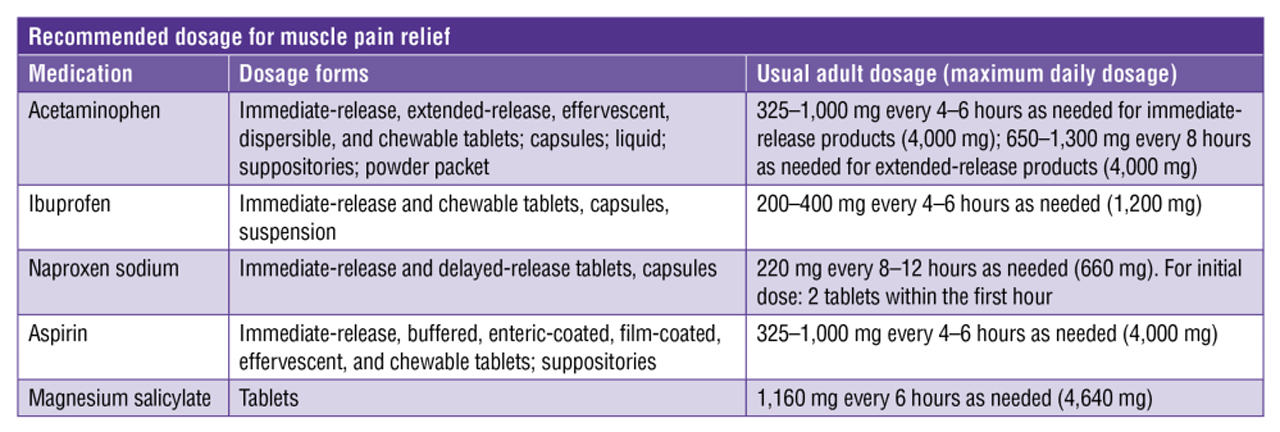Mary Warner

Everyone experiences muscle pain (myalgia) at some point in their lives, whether due to overexertion, injury, or disease. Fortunately, numerous options, including rest, massage, and medications, are available to relieve the pain.
The most common type of muscle pain is caused by overexertion, repeated unaccustomed muscle contraction, usually from sports or other exercise. Muscle soreness is delayed, usually by 8 hours or more, and generally peaks at 24 to 48 hours but can last for days. Overexertion pain is common among people who don’t exercise regularly but then begin an exercise regimen at a level of high intensity. Tension or poor posture can also produce this type of muscle pain.
Pain resulting from injury or trauma to the muscle, whether from overuse or an unexpected pull or twist, is often sharper and more troublesome than the pain from simple overexertion and takes longer to resolve, often becoming chronic.
Finally, myalgia can result from systemic infections (e.g., the flu), chronic disorders (i.e., fibromyalgia or lupus), or medications, including ACE inhibitors and statins.

Nonpharmacological relief
Probably the most common method of treating muscle pain without medication is the RICE method—rest, ice, compression, and elevation—which helps to reduce swelling, ease pain, and speed up healing. Patients should rest the affected body part and apply ice for the first 24 to 72 hours after injury to reduce inflammation. After that, heat often feels more soothing.
Muscle aches from overuse and fibromyalgia often respond well to massage and gentle stretching as well. Somewhat counterintuitively, exercise can help restore proper muscle tone, but it’s important, as always, to begin slowly and warm up completely before exercising.
Medication relief
If these nonpharmacological methods don’t work, patients can take nonprescription medications to relief muscle aches and pains. Systemic analgesics such as acetaminophen and NSAIDs (e.g., aspirin, ibuprofen, naproxen, and magnesium salicylate tetrahydrate) are most commonly used as initial treatment for muscle pain. It’s important to note that because chronic use of NSAIDs can lead to severe adverse effects, including GI bleeding and increased risk of CVD, systemic analgesic use should be limited to 10 days and patients should see their primary care provider if pain continues past this time.
Although systemic analgesics are often chosen as the initial treatment of muscle pain, there is evidence that topical analgesics may be more effective while limiting adverse effects. Options include creams, patches, and gels containing menthol (e.g., Aspercreme, Bengay, Icy Hot), lidocaine (e.g., Aspercreme, Salonpas), trolamine salicylate (e.g., Sportscreme, Aspercreme), and diclofenac sodium (e.g., Voltaren). Products containing combinations of methyl salicylate, menthol, lidocaine, and/or camphor are also widely available.
What to tell your patients
Advise patients that if muscle aches are a result of a specific disease or condition, the underlying condition should be treated first, with pain relief as a secondary concern. If muscle pain is severe, lasts for more than 10 days, is related to starting or changing doses of an ACE inhibitor or statin, or if swelling or redness is visible around the affected muscle, patients should consult their primary care physician. Also advise patients to limit use of NSAIDs to dosages needed to relieve pain rather than routine use. ■